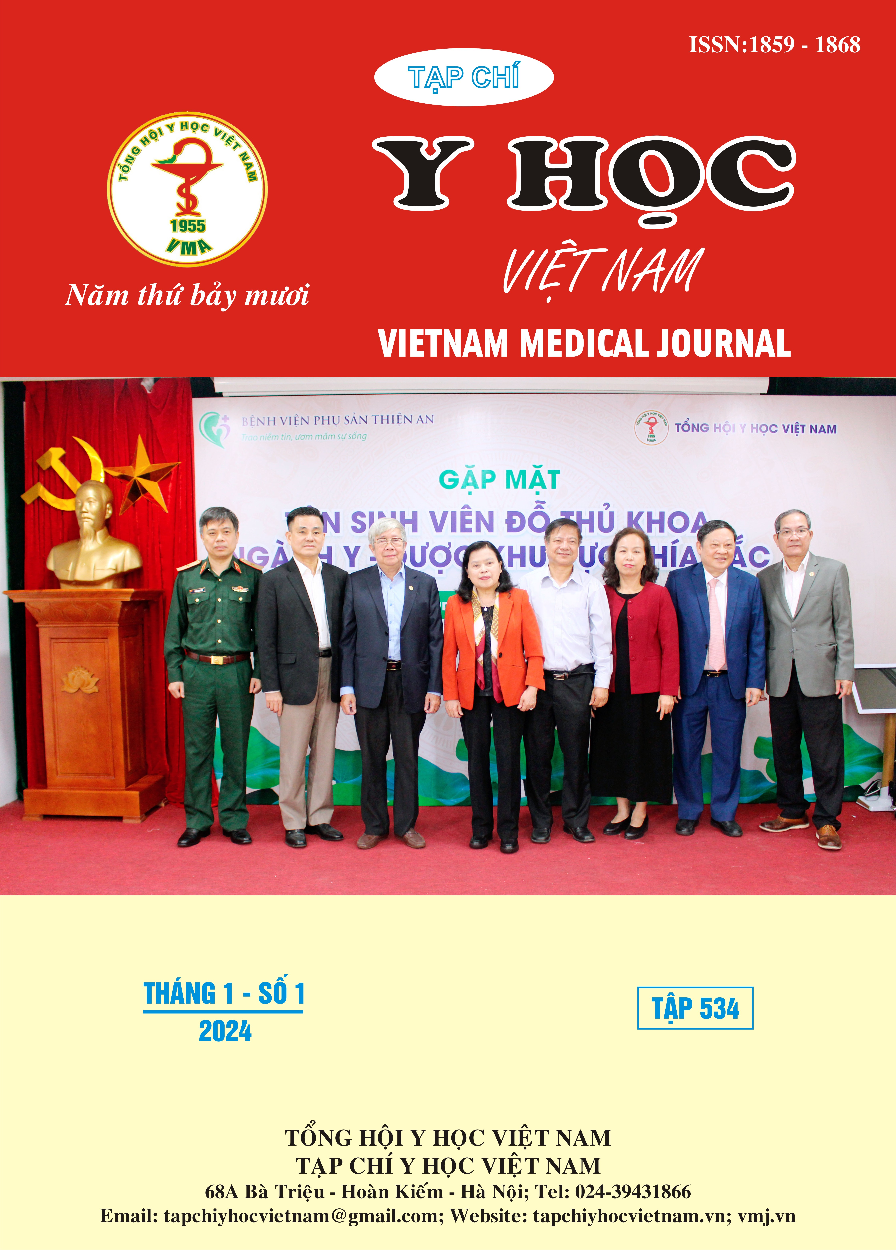SYNTHESIS AND REFERENCE STANDARD ESTABLISHMENT OF ALLOPURINOL IMPURITY F (ETHYL-(E/Z)-3-(2-CARBETHOXY-2-CYANOETHENYL)AMINO-1H-PYRAZOL-4-CARBOXYLAT)
Main Article Content
Abstract
Background: Allopurinol is a priority drug prescribed in gout treatment and is currently listed as an essential drug by the Ministry of Health of Vietnam [1]. Impurity F allopurinol (Ethyl-(E/Z)-3-(2-carbethoxy-2-cyanoethenyl)amino-1H-pyrazol-4-carboxylate) is an impurity in processing the synthesis of allopurinol that has the potential to cause cancer mutated and regulated under mandatory testing in USP-NF-2023 [2],[6]. However, the F allopurinol impurity standard is currently very expensive (over 800 USD/25mg) and is not readily available, affecting testing and drug quality control [7]. Objectives: Synthesis of F allopurinol impurities at laboratory scale qualified to establish reference standards in Vietnam. Materials and methods: Impurity F allopurinol is synthesized from ethyl (ethoxymethylene) cyanoacetate and hydrazine hydrate 50% with molar ratio and temperature and reaction time were investigated for ease of purification and high purity. Developed a process to determine purity using HPLC-PDA and evaluated vial uniformity and purity values at 03 GLP laboratories in the Institute of Drug Quality Control in Ho Chi Minh City. Results: Successfully synthesized F allopurinol from ethyl(ethoxymethylene)cyanoacetate and hydrazine hydrate 50% with molar ratio 4 :1; reaction temperature 60oC, for 30 minutes. The substant structure was determined by UV-Vis spectroscopy; IR compared with standard, MS high-resolution, 13C-NMR, and 1H-NMR spectra showed results consistent with the F allopurinol impurity structure. The purity determination procedure by HPLC-PDA was validated with stationary phase: Gemini – NX C18 column (15 cm; 4.6 mm; 5µm), column temperature: 25 °C, mobile phase: acetonitrile – formic acid, pH = 2.5 (35:65), flow rate: 1 ml/min, sample concentration 50 µg/ml in mobile phase, sample injection volume: 10 µl, wavelength 254 nm. Results of interlaboratory evaluation of purity with published value reached 99.5%. Conclusion: 2.5g of allopurinol F impurity has been synthesized on a laboratory with a purity of over 99%, and a process for determining the F impurity purity by HPLC-PDA has been developed to qualify for establishing a reference standard.
Article Details
References
2. G. G. Danagulyan, A. P. Boyakhchyan, V. G. Kirakosyan (2010), “An example of a domino reation in the synthesis of pyrazolo[1,5-a] pyrimidine derivative”, Chemistry of Heterocyclic Compounds, 46(6), pp. 768-769.
3. ICH Harmonized tripartite guideline (2005), Validation of analytical procedures: text and methodology, pp. 1-13.
4. ISO 13528:2005 (2005), Statistical methods for use in proficiency testing by inter-laboratory comparisons, p. 64.
5. John D. FitzGerald, Nicola Dalbeth, Ted Mikuls, et al (2020); American College of Rheumatology: “2020 American College of Rheumatology Guideline for the Management of Gout”, Arthritis Care & Research, pp 1–17, DOI 10.1002/acr.24180 © 2020.
6. USP NF-2023, CD-ROMs.
7. USP Reference Standards. https://store.usp. org/product/1013024. Ngày truy cập 01/08/2023.
8. Wuxi Yew Pharmaceutical Co ltd (2020), “Allopurinol impurity F and preparation method thereof”, China Patent CN111978259A.


